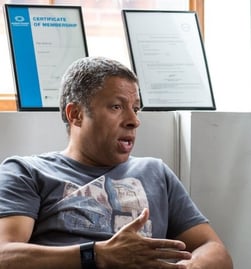 Last week we focused on our new Text upgrades rollout, which, by the way, is a game-changer if you missed it. This week, I'm back to my Life Happened series talking about how technology can help the church navigate the change we've seen the last three years. The 7 topics for this series came out of the voice of the customer research we recently did to try to pinpoint what actually changed.
Last week we focused on our new Text upgrades rollout, which, by the way, is a game-changer if you missed it. This week, I'm back to my Life Happened series talking about how technology can help the church navigate the change we've seen the last three years. The 7 topics for this series came out of the voice of the customer research we recently did to try to pinpoint what actually changed.
Two weeks ago we looked at Blended Worship. I've heard the term Hybrid Worship used in a few podcasts since then. This week we are looking at the stagnation of assimilation and how software can help you get unstuck.
It seems the last three years have exacerbated the problem of assimilation. Churches without a plan are struggling even more. Churches with a plan have noticed that it seems less effective than it used to. Something is stuck.
To be clear, assimilation here refers to the process of interacting with new people to help them become fully engaged in the life of the church. Simply put, it is how churches help new people belong.
Philippians 2:4 provides helpful counsel, "Don’t look out only for your own interests, but take an interest in others, too." (NLT)
 If you want people to belong, you have to take an interest in them. You need to learn things like their name, their history, their pain points - i.e. their interests.
If you want people to belong, you have to take an interest in them. You need to learn things like their name, their history, their pain points - i.e. their interests.
At the same time, you need to vulnerably share your name, your history, your pain points - i.e. your interests. Connection happens first. Then belonging.
Here's how software can help you intentionally plan for connection and belonging at the personal level. We call them Workflows.
Start by mapping out the relationship development process. For outreach, it might look something like this.
- Create a landing page that shares the story of the desire to belong. A few 2-3 sentence paragraphs or a 2 minute video. From the pastor personally or from part of a sermon. Goal: vulnerability.
- Create a registration to invite people to hear other stories about a desire to belong by giving their name and email address. Goal: connect.
- Create 3-5 email templates with these stories in them.
- Create 2-3 text templates to complement these. Ask an open-ended question that they can respond to and start a Chat dialog.
- Create a registration to include in the emails and texts for people to give their name, phone number and ask them to share their interests.
Next, resource your workflow by creating the written and video testimonies, the groups and registration forms, and the emails and texts that you outlined in the relationship development map.
Finally, create a workflow that will automatically deliver these resources over a period of several months.
The goal of this workflow is simply to connect with a person and learn a little bit about what interests them. It's a really good idea to include a Note creation step in the workflow so that in addition to the automation, you have a person assigned to follow-up personally. It would be awesome if that person was one of the stories in the workflow. Their job is to reach out and then to add notes and follow up tasks to care further for the person based on these personal interactions.
Let's say from this workflow, a person visits the church for the first time. That's fantastic. Now, create another workflow to move them toward an opportunity to learn more and join the church. Keep in mind that you are not looking out for your own interests, but you are interested in learning about and helping them.
Once, you've learned their interests, you can create other workflows or simply use the Notes feature to help them address pain points, other interests; and/or find a small group or place to serve.
Refer to this Knowledge Base Article and the Workflow Automation webinar to learn more about how to do this in Churchteams. There's even a Workflow category for blog posts on these and related topics.
We didn't really address the reasons for the changes in assimilation in this article. I'm saving that for two weeks from now when we look at the "Cautious Congregation" phenomenon that seems to have resulted from life happening the last few years.



